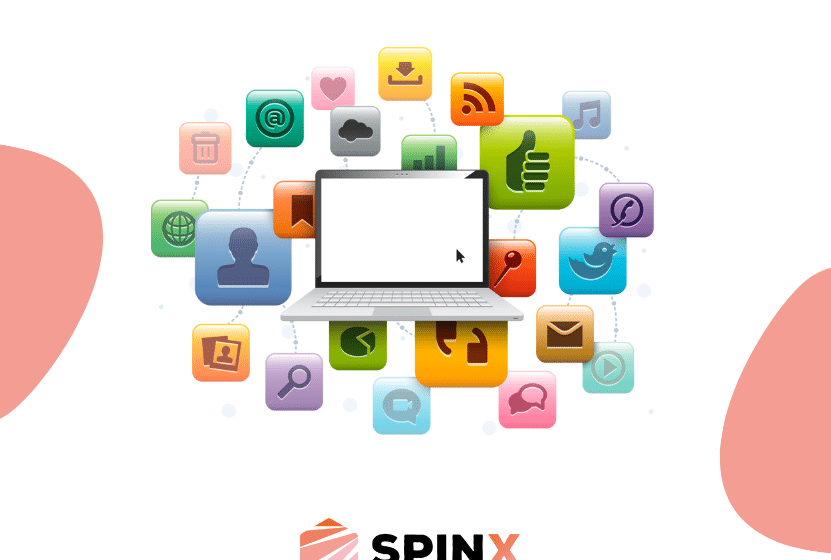Pay per-install (PPI) or Cost per-Install (cpi) is a pricing model that has been around for quite some time in the digital world, especially in the app industry. It is a popular method of generating revenue where advertisers or app marketers pay a certain amount to publishers for each app install. While pay-per-install has benefits, including guaranteed downloads and a higher return on investment for advertisers, it also has drawbacks. In this article, we will explore the good and the bad of the pay-per-install model, providing an understanding of what it entails, whether it is a suitable strategy for your business, or whether you should choose other pricing models.
Cost per install (CPI): What Does It Mean For App Advertisers?
Cost per install (CPI) is the formula that app advertisers use to measure the cost of acquiring a single user who installs their app. In a nutshell, the amount that app advertisers pay for each install.
CPI is an important metric for app advertisers because it helps them understand the effectiveness of their advertising campaigns. By calculating the CPI, advertisers can determine the cost-effectiveness of their advertising efforts and adjust their campaigns to optimize their return on investment according to how many downloads they get.
CPI can vary depending on several factors, including the advertising platform, ad unit, conversion rates, text ads effectiveness, selected targeting options, the promoted app type, and other metrics. For example, advertising on a platform with the high competition may result in a higher CPI, while advertising on a less competitive platform may result in a lower CPI.
Overall, pay-per-install is an essential metric for app advertisers to understand and optimize their ad campaign as it directly impacts the success and profitability of their games.
Pay Per Install Example

Let’s say you own mobile apps and want to promote them to get more installs. You decide to run a pay-per-install ad campaign, which means you’ll pay an advertising network every time your ad campaign generates an install.
You work with the ad network to create an ad for your game that will appear in other apps or websites. When someone clicks on the ad and installs your game, the advertising network tracks that installation, and the advertiser pays a predetermined amount per install, say $1.
If your cpi campaign generates 100 installs, you’ll pay the advertising network $100 ($1 per install x 100 installs). This method ensures you only pay for actual installations rather than just ad views or clicks.
PPI can effectively drive app installations and increase your user base, as app advertisers pay only for successful installations. However, it’s important to monitor how much your ad campaign generates closely and the average cpi to ensure you’re not paying more than your app’s lifetime value per user.
Cost per install (aka CPI) Formula
The formula for calculating cost per install (CPI) is:
CPI = Total Ad Spend / Number of Installs
In this formula, the total ad spend refers to the amount that app advertisers pay to acquire users who install the app. The number of installs refers to the total number of app installations resulting from the advertising campaign.
For example, let’s say you spent $1,000 on a CPI advertising campaign, and it generated 500 app installations. Using the formula above, your CPI would be:
CPI = $1,000 / 500 installs CPI = $2 per app install
This means that, on average, you paid $2 to acquire each new user who completed an app install through the ad campaign.
Calculating the CPI is an important step in evaluating the success of an advertising campaign and determining whether it is cost-effective. Advertisers should aim to keep their CPI as low as possible to ensure they get the most value for their advertising dollars.
CPI vs. CPM
CPI (Cost per Install) and CPM (Cost per Mille, also known as Cost per Thousand) are both metrics used in digital advertising, but they measure different things.
CPI measures the cost of acquiring each install of an app resulting from an advertising campaign. It calculates the cost per user who installs an app after seeing an ad. CPI is commonly used by app developers and marketers to evaluate their advertising campaigns’ cost-effectiveness and optimize their return on investment (ROI).
On the other hand, CPM measures the cost of showing an ad to 1,000 people (or mille in Latin). CPM is commonly used in display advertising, such as banner ads, and calculates the cost per 1,000 impressions or views of an ad, regardless of whether or not the viewer takes any action, such as clicking on the ad or installing the app.
In other words, CPI measures the cost per install of an app, while CPM measures the cost per 1,000 impressions or views of an ad. Both metrics are important in different contexts and can be used together to evaluate the effectiveness of a digital advertising campaign.
Cost per install (CPI) App Marketing: The Good
Brand awareness
Pay-per-install campaigns can also help increase brand awareness and visibility for the app, as the more installs an app has, the more it ranks in the Playstore/Appstore. Even if a user does not install the app, they may still see it in the store if it has thousands of millions of installs, and thus, they become more familiar with the app brand.
Cost-effectiveness
CPI is a performance-based pricing model that allows advertisers to pay only for users who installed their apps, contrary to the cost-per-click or cost-per-impression model, which can be costly – as the advertiser pays for every click or one thousand impressions. This makes it a cost-effective way to acquire new users who spend time in-app, watching ads while ranking their apps in the store.
Flexibility
A pay-per-install campaign can be customized to fit the advertiser’s budget and goals. App marketers can set bid prices, adjust targeting options, and choose the best ad formats for their app category.
Pay Per Install (CPI): The Bad
Low-quality installs
Low-quality installs exist on the pay-per-install model for various reasons, such as incentivized traffic, bot traffic, click fraud, and lack of targeting. Incentivized traffic can result in users with no real interest in the app, while bot traffic and click fraud can generate fake installs. Without proper targeting, advertisers may also show their ads to users who are unlikely to engage with the app, resulting in low-quality installs. Advertisers need to monitor their campaigns closely and take steps to reduce low-quality installs.
Limited data
Data is often limited on pay per install (PPI) model because PPI campaigns are typically run on mobile ad networks that do not have direct access to user data, such as device identifiers, location data, or app usage behavior. PPI campaigns also tend to focus on generating installs rather than driving engagement or conversions, making it difficult to track user behavior beyond the initial install. Additionally, PPI campaigns often rely on incentivized traffic, resulting in low-quality installs and limited user engagement, further limiting data available for analysis.
Higher costs
Compared to the CPA model, the pay-per-install model can be costly for app owners. The CPI (Cost Per Install) model typically has a higher cost than the CPA (Cost Per Action) model for app advertisers because CPI campaigns are focused solely on driving app installs, which are often more challenging to generate than other types of user actions such as clicks or sign-ups. In a CPI model, advertisers pay for each successful install, regardless of whether or not the user engages with the app or generates revenue for the advertiser. Additionally, CPI campaigns often require more sophisticated targeting and optimization strategies to generate high-quality installs, which can further increase the cost. In contrast, CPA campaigns typically focus on more specific user actions that are easier to track and optimize, such as clicks, sign-ups, or purchases, which may have a lower cost per action than an install.
Pay Per Install vs. Cost per Action

Ultimately, the choice between a CPI or CPA model depends on the advertiser’s goals and the specific metrics they are trying to optimize for. Pay Per Install (PPI) and Cost per Action (CPA) are both popular pricing models in digital advertising, but they measure different actions and outcomes.
Pay Per Install (PPI) is a pricing model in which an advertiser pays a fixed rate for each app install generated through an advertising campaign. This model is often used by app developers and relevant advertisers wanting to promote their apps and drive installs. In this model, the advertiser only pays when users install their app after clicking on an ad.
On the other hand, Cost per Action (CPA) is a pricing model in which an advertiser pays a fixed rate for a user’s specific action after clicking on an ad. The action could be anything from purchasing to filling out a form or signing up for a newsletter. Businesses often use this model to track specific actions that lead to a sale or a conversion.
In summary, PPI measures the cost of each app installation resulting from an advertising campaign. In contrast, CPA measures the cost of a specific action taken by a user after clicking on an ad. Both models are effective in different contexts and can be used depending on the goals and objectives of the advertising campaign.
Here at Spinx, we always prefer to bring user installs and more money and profits for the advertiser. That’s why we always aim to bring healthy revenue by bidding at specific actions within the app as a certain level or an in-app purchase is reached. That way, we establish a portfolio of users spending, playing, and staying engaged within the app.
Final thoughts
In conclusion, Pay Per Install (PPI) can be a useful pricing model for some software developers and advertisers, but it also has downsides. On the positive side, PPI can be a cost-effective way to promote and distribute software, as developers only pay for installs that have occurred. PPI can also be useful for advertisers looking to reach a large audience quickly. However, PPI also has drawbacks, such as the potential for fraudulent installs and low-quality traffic. As with any pricing model, it’s essential to carefully weigh the pros and cons of PPI and determine if it’s the right fit for your software development or advertising needs.





